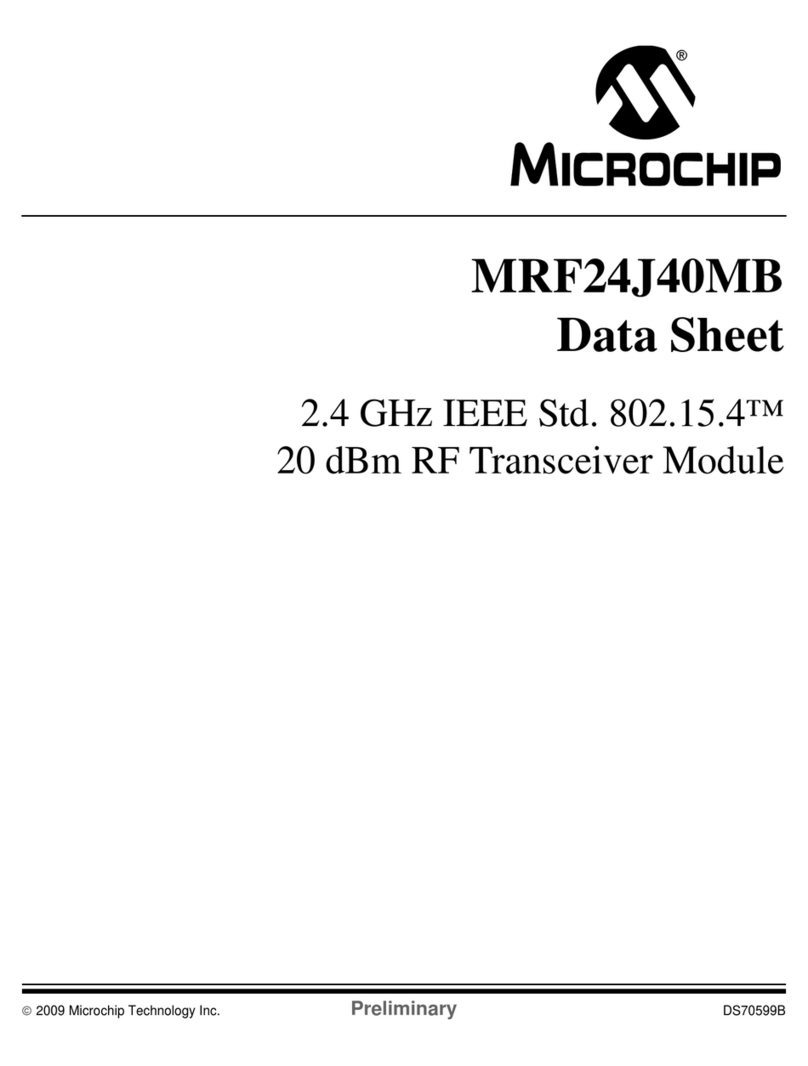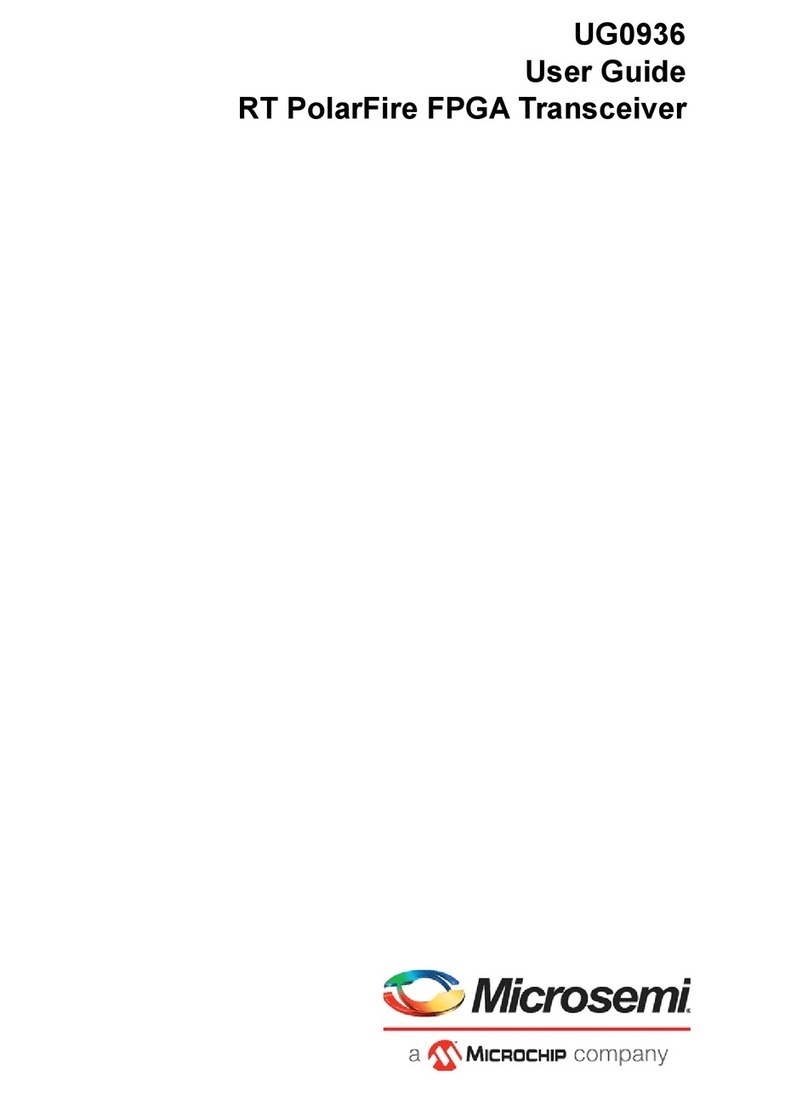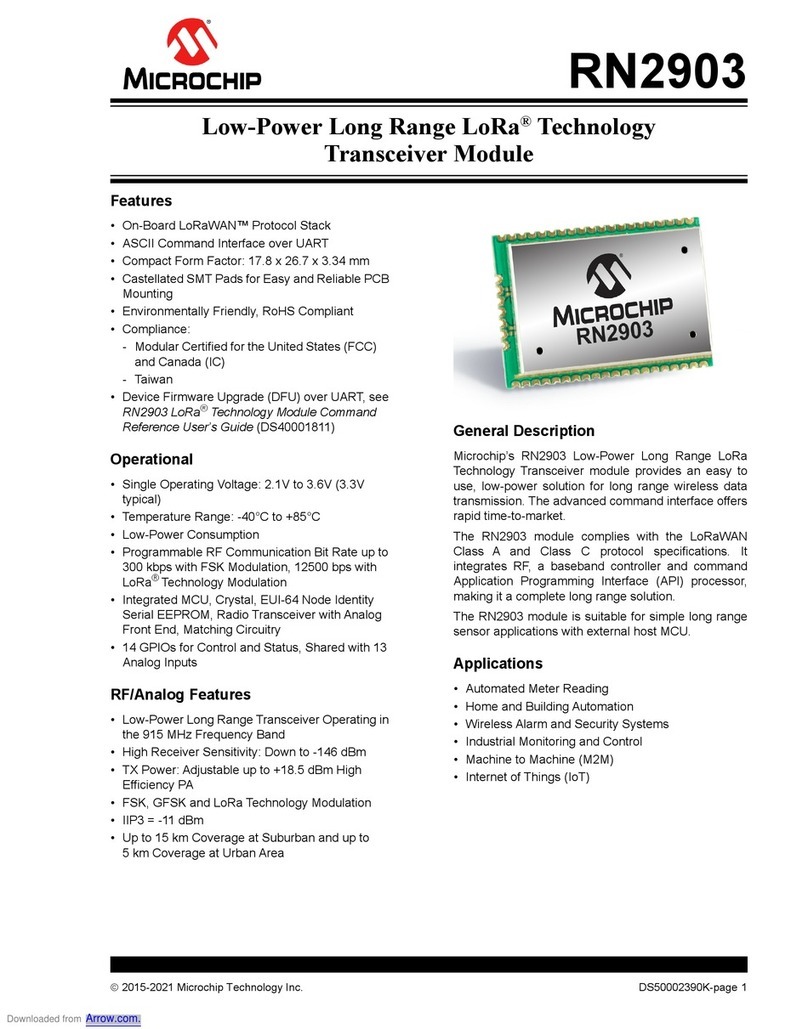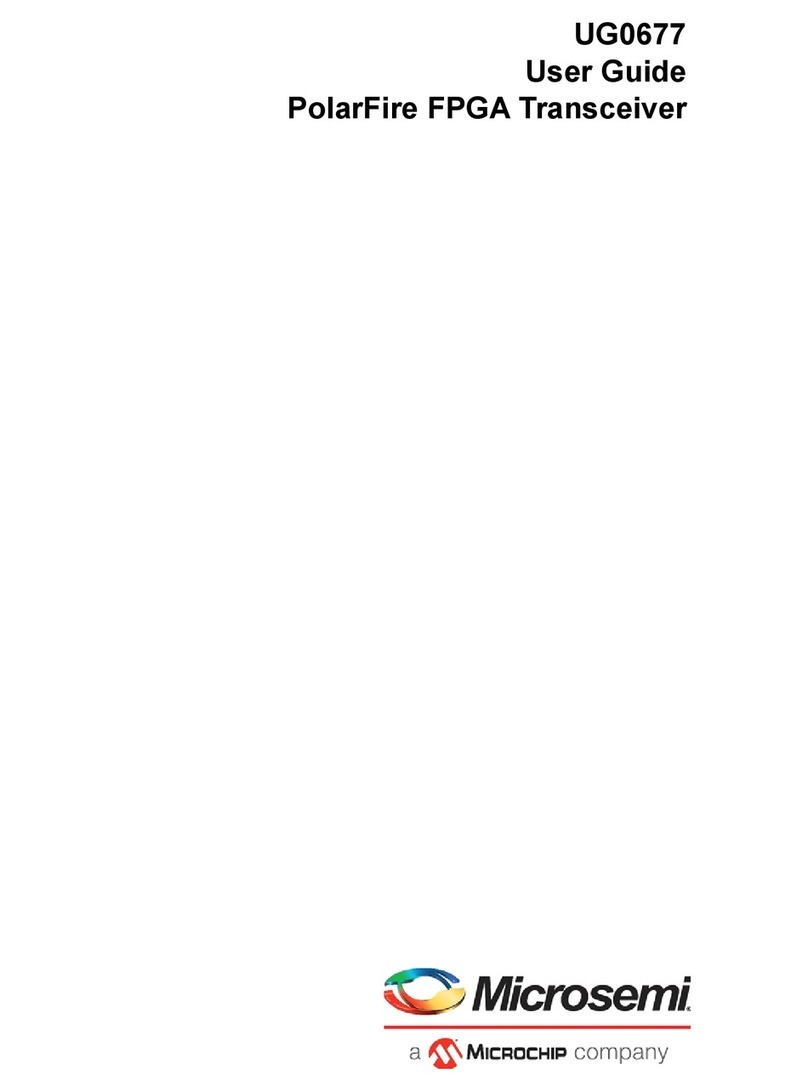
2014 Microchip Technology Inc. Advance Information DS70005173A-page 3
MRF24J40MD/ME
1.0 DEVICE OVERVIEW
The MRF24J40MD/ME is a 2.4 GHz IEEE Std.
802.15.4™ compliant, surface mount module with
integrated crystal, internal voltage regulator, matching
circuitry, Power Amplifier (PA), Low Noise Amplifier
(LNA) with PCB Trace Antenna (MRF24J40MD) or 50Ω
external antenna connector (MRF24J40ME). The
MRF24J40MD/ME module operates in the non-
licensed 2.4 GHz frequency band. The integrated
module design frees the integrator from extensive RF
and antenna design, and regulatory compliance testing
allowing quicker time to market.
The MRF24J40MD/ME module is compatible with
Microchip’s MiWi™ Development Environment
software stacks. The MiWi Development Environment
software stack including the source code is available as
a free download, from the Microchip web site: http://
www.microchip.com/wireless.
The MRF24J40MD/ME module has received
regulatory approvals for modular devices in the United
States (FCC) and Canada (IC). Modular approval
removes the need for expensive RF and antenna
design, and allows the end user to place the
MRF24J40MD/ME module inside a finished product
and does not require regulatory testing for an
intentional radiator (RF transmitter). To maintain
conformance, refer to module settings in Section 3.1.2
“RF Exposure” for the United States and Section
“Transmitter Antenna (from Section 7.1.2 RSS-Gen,
Issue 3, December 2010): User manuals for
transmitters shall display the following notice in a
conspicuous location:” for Canada.
The MRF24J40MD/ME module is an R&TTE Directive
assessed radio module for operation in Europe. The
module tests can be applied toward final product
certification and Declaration of Conformity (DoC). To
maintain conformance for Europe, refer to module
settings in Section 3.4 “Australia”. Additional testing
may be required depending on the end application.
1.1 Interface Description
Figure 1-1 shows a simplified block diagram of the
MRF24J40MD/ME module. The module is based on
the Microchip Technology MRF24J40 IEEE
802.15.4™ 2.4 GHz RF Transceiver IC. The module
interfaces to many popular Microchip PIC®microcon-
trollers through a 4-wire SPI interface, interrupt, wake,
reset, power and ground, as shown in Figure 1-2.
Table 1-1 provides the pin descriptions.
Serial communication and module configuration for the
MRF24J40MD/ME module are documented in the
“MRF24J40 Data Sheet” (DS39776). Refer to the data
sheet for specific serial interface protocol and register
definitions.
Also, see Section 1.4 “Operation” for specific register
settings that are unique to the MRF24J40MD/ME
module.
FIGURE 1-1: MRF24J40MD/ME BLOCK DIAGRAM
Antenna
U.FL
PA
Physical MAC
Interface
Power
Management
SPI
20 MHz
Crystal
Digital
I/O
Power
MRF24J40MD/ME IEEE Std. 802.15.4™ Module
MRF24J40
LNA
Connector































